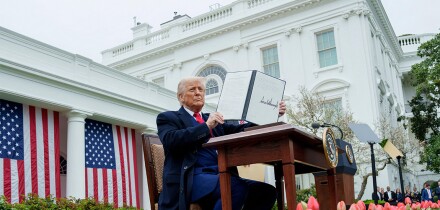Asia Pacific corporates are growing internationally and also in terms of sophistication. They are now not just seeking to hedge foreign-exchange risks arising from balance-sheet exposures, such as receivables or payables denominated in foreign currencies, but also fx risks arising from off-balance sheet exposures such as forecasted revenue or expenses.
This Learning Curve discusses the case for hedging fx risks arising from off-balance sheet exposures through the use of Average-Rate Options--AVROs--or Double Average-Rate Options--DAVROs--and Average-Rate Basket Options--AVRBOs.
Hedging Off-Balance Sheet Exposure
In today's highly competitive market environment, protecting profit margins has become one of the top priorities of ceos and cfos. It is no longer sufficient to hedge current profit margin, but increasingly necessary to hedge future profit margins.
Future profits are increasingly being scrutinized by credit rating agencies, creditors as well as equity analysts. Volatility in future earnings also introduces risk to a corporate's debt covenants as well as credit ratings. Foreign exchange hedging seeks to smooth the peaks and troughs of exchange rates, which may then result in stable earnings and greater borrowing capacity or simply avoid costly violations of debt covenants and credit downgrades.
Hedging With Average-Rate Options
Earnings denominated in non-functional foreign currencies may be translated to the reporting entity's presentation currency using the average rate for the period. Functional currencies may be defined as the currencies of the primary economic environment in which the entity operates. Corporates typically set a benchmark budget rate to be achieved by the forecasted revenue. For example, a Singapore-based corporate has highly probable forecasted weekly revenue of USD1 million from 1 Jan., 2007 to 31 Dec., 2007 at a budget rate of SGD1.580.
AVROs are well suited for this purpose as the payoff is defined as the difference between the average spot fixing in the averaging period--weekly--and the AVRO strike, in this case SGD1.580.
In addition, due to the inherently lower volatility of an average, the option will show a premium reduction over the equivalent vanilla options. Thus AVROs are popular because of the way they replicate the economic exposure arising from a corporate's regular or continuous stream of foreign currency flows as well as the option's lower premium.
Similarly, AVROs can be effective, subject to satisfying relevant hedge accounting criteria, in offsetting the so-called accounting exposure arising from the foreign currency revenues and expenses of an entity, as these will be effectively re-measured at the average rate if occurring evenly over the reporting period.
An important point to note is that an AVRO does not offer protection to an exposure for a single point in time; it is best suited as a hedge of a constant stream of exposure over a period of time. It should not be seen as a cheap substitute to vanilla options.
Double Average-Rate Options
There are two average periods when determining the payoff of DAVROs. The first averaging period determines the strike of the option while the second averaging period establishes the reference rate against the strike. Thus the payoff of DAVROs is the difference between the average spot fixing in the second averaging period and the DAVRO strike: essentially the average spot fixing in the first averaging period.
DAVROs are typically used when the buyer wants to avoid locking in the strike on a bad day when the spot market spikes or dips abnormally. The alternate view is that the buyer has a budget strike rate based on future spot rate in the first averaging period and USD/SGD exposure in the second averaging period. Once the strike has been established, the DAVROs work in a similar way as the AVROs.
The cost of DAVROs generally depends on the expected spot fixing during the average strike period. It may or may not be more costly than equivalent AVROs.
Indicative Pricings
Client buys USD Put/SGD Call
Pricing Basis
Spot: SGD1.5800
31 Dec 2007 Forward: SGD1.5350
Client Position: Client Buys USD Put/SGD Call
| Type | Strike | Expiry | Ave Strike | Ave Rate | Ave Freq | Premium |
| Period | Period | |||||
| Vanilla | 1.58 | 31-Dec-07 | N.A. | N.A. | N.A. | 4.45% |
| AVRO | 1.58 | 31-Dec-07 | N.A. | 2 Jan – 31 Dec 2007 | Weekly | 3.40% |
| DAVRO | N.A. | 31-Dec-07 | Spot – 29 Dec 2006 | 2 Jan – 31 Dec 2007 | Weekly | 2.50% |
Pricing is indicative and based on Barclays Capitalpricing models for illustration only.
Besides having a better match to the USD/SGD exposure than the vanilla equivalent, the AVRO, as expected, costs less than the vanilla equivalent. Thus the AVRO may be a more effective and efficient hedging instrument of highly probable forecasted revenue.
The DAVRO costs less than the AVRO with the same average rate period because the USD/SGD forward points in the average strike period are at a discount relative to the spot whereas the strike of the AVRO is in the money relative to the forward. Hypothetically, if the spot remains flat during the average strike period, the client would have obtained an AVRO with the strike 1.5800 at 25% discount.
Hedge Accounting And Average Options
The AVRO may qualify for cash-flow hedge accounting of highly probable forecast revenue in a foreign currency under IAS 39. The chance of qualification depends on several factors such as careful definition of the hedged risk, how the term highly probable is interpreted, as well as how to prove hedge effectiveness etc.
On the other hand, the DAVRO may not qualify for hedge accounting as the strike is not known until the end of the average strike period. A possible solution is to designate the DAVRO as a hedging instrument of highly probable forecast revenue in a foreign currency after the average strike period. The delta of the DAVRO is likely to be low before the end of the average strike period and hence may result in small mark-to-market impact in the profit or loss statements. This approach may be appropriate for a corporate that, for example, wishes to hedge longer term exposures but is unable to satisfy the "highly probable" criterion, and therefore apply hedge accounting, until closer to the date of the hedged transaction. These, of course are matters that the company should discuss with its auditors prior to entering into any transactions.
Average-Rate Basket Options
For example, a Singapore based corporate has highly probable forecasted weekly revenue denominated in a basket of foreign currencies e.g. USD1 million, EUR1 million and AUD1 million from Jan. 1, 2007 to Dec. 31, 2007. It may be possible to to hedge the above exposure with average-rate basket options.
AVRBOs work in a similar way as AVROs except that the payoff is defined as the difference between the weighted average spot fixing of USD/SGD, EUR/SGD and AUD/SGD in the averaging period--weekly--and the AVRBOs strike.
| Mark Lim |
This week's Learning Curve was written by Mark Lim, associate director in corporate risk advisory at Barclays Capitalin Singapore.






